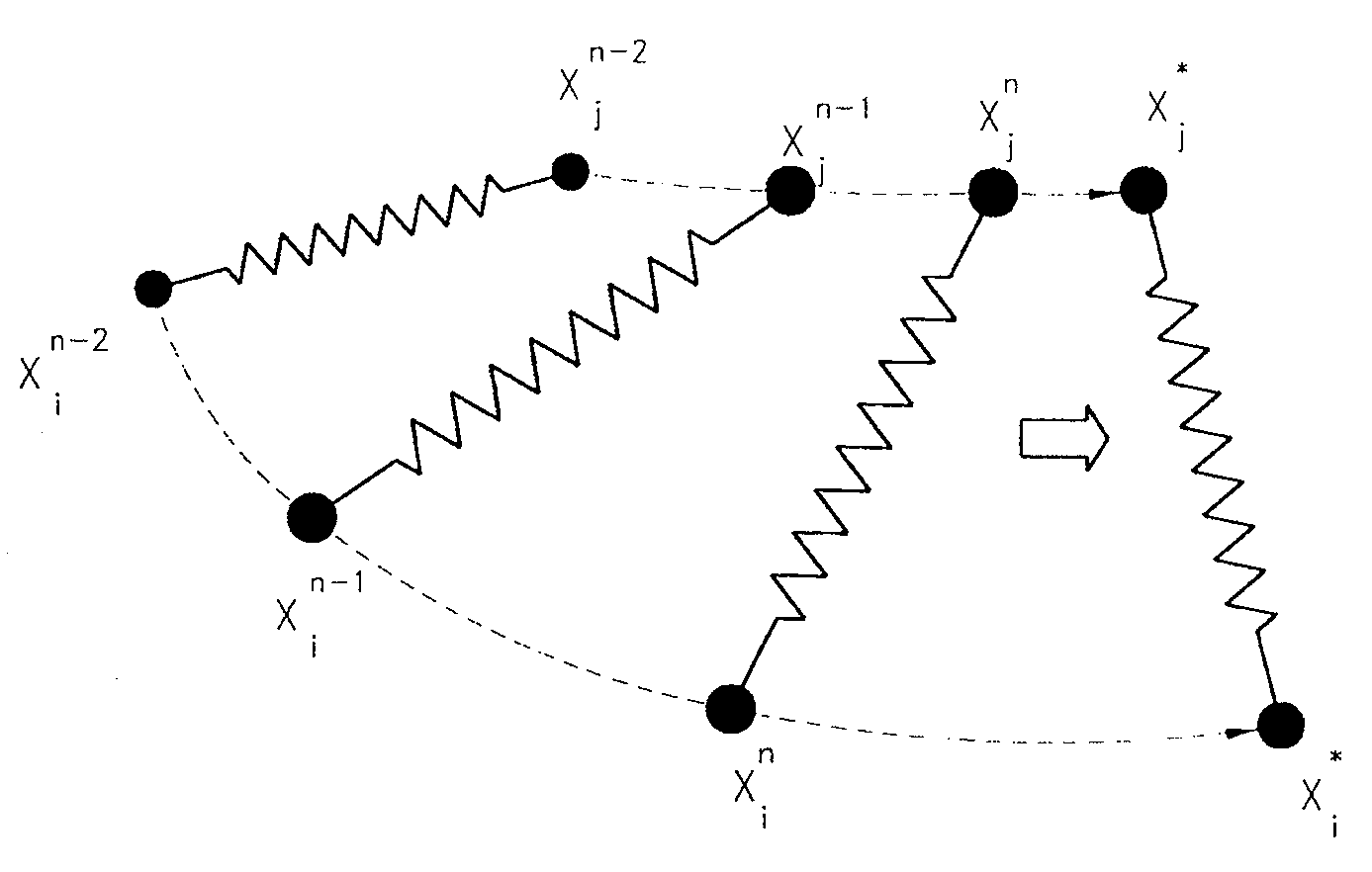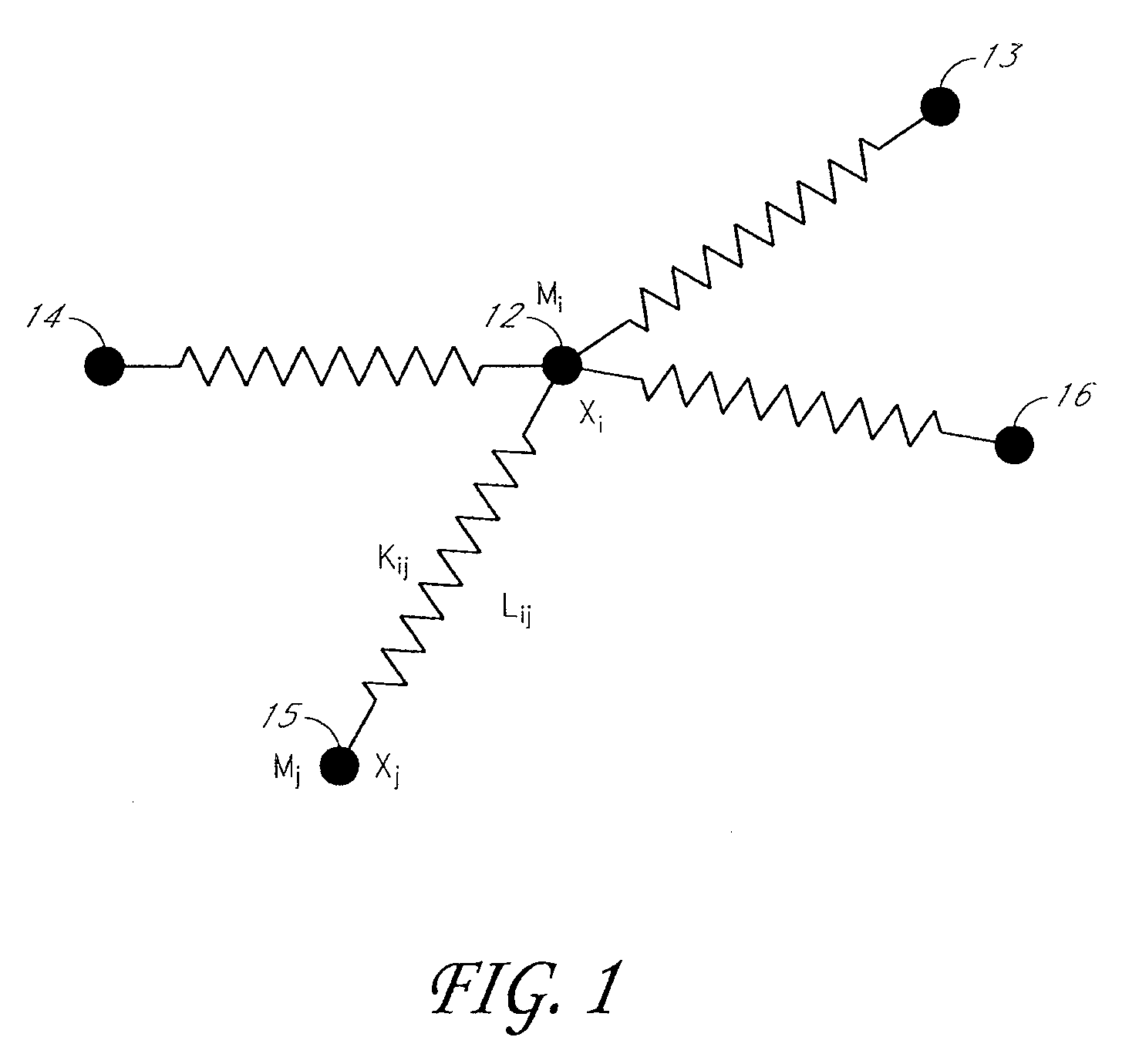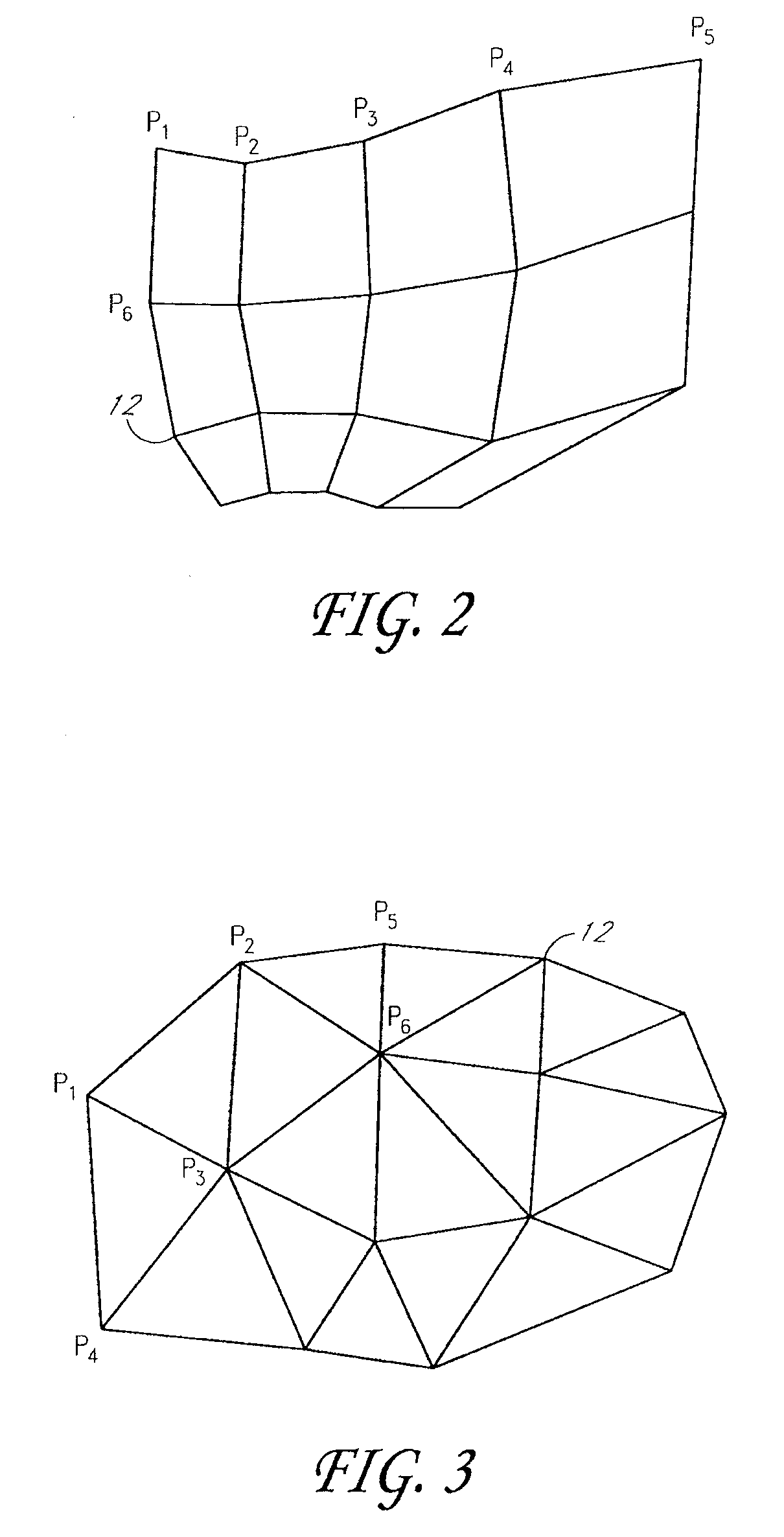Method of cloth simulation using linear stretch/shear model
a cloth simulation and linear stretch technology, applied in the field of cloth simulation using linear stretch/shear model, can solve the problems of clothing animation, clothing simulation involves a large amount of computation, and the animators have been and remain stressful tasks to simulate dynamic movements of clothes
- Summary
- Abstract
- Description
- Claims
- Application Information
AI Technical Summary
Benefits of technology
Problems solved by technology
Method used
Image
Examples
Embodiment Construction
[0025]Various aspects of the invention provide new techniques for simulation of clothes. The disclosed techniques fix several flaws that existed in the previous real-time models. Also, the new techniques allow for several levels of quality vs. speed tradeoffs, providing a wide gamut of scalability. Therefore, the techniques of the invention provide immediate uses in real-time applications such as video games and VR simulations. Also, these techniques can be incorporated into off-line systems for previewing clothing animations before making more accurate versions of them.
[0026]Physical models for representing cloth can be classified into two: edge-based systems and area-based systems. Edge-based systems measure the in-plane deformation based on the current length of the edges, whereas triangle based systems, an area-based system, measure the in-plane deformation based on the areal deformation of each triangle defined by three nodes. Embodiments of the invention provide linearizable p...
PUM
 Login to View More
Login to View More Abstract
Description
Claims
Application Information
 Login to View More
Login to View More - R&D
- Intellectual Property
- Life Sciences
- Materials
- Tech Scout
- Unparalleled Data Quality
- Higher Quality Content
- 60% Fewer Hallucinations
Browse by: Latest US Patents, China's latest patents, Technical Efficacy Thesaurus, Application Domain, Technology Topic, Popular Technical Reports.
© 2025 PatSnap. All rights reserved.Legal|Privacy policy|Modern Slavery Act Transparency Statement|Sitemap|About US| Contact US: help@patsnap.com



